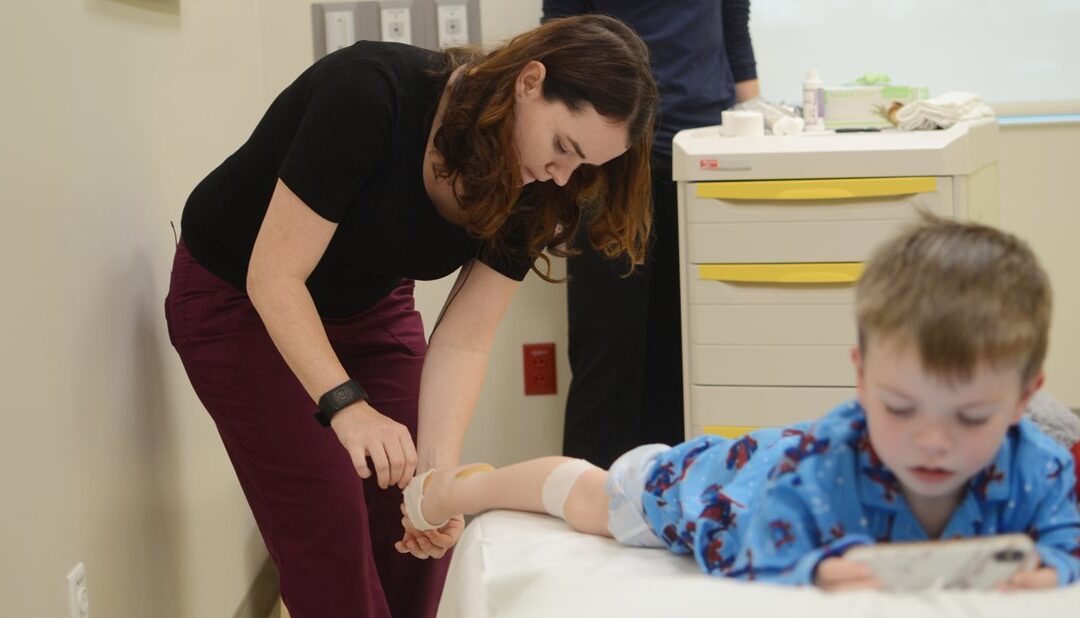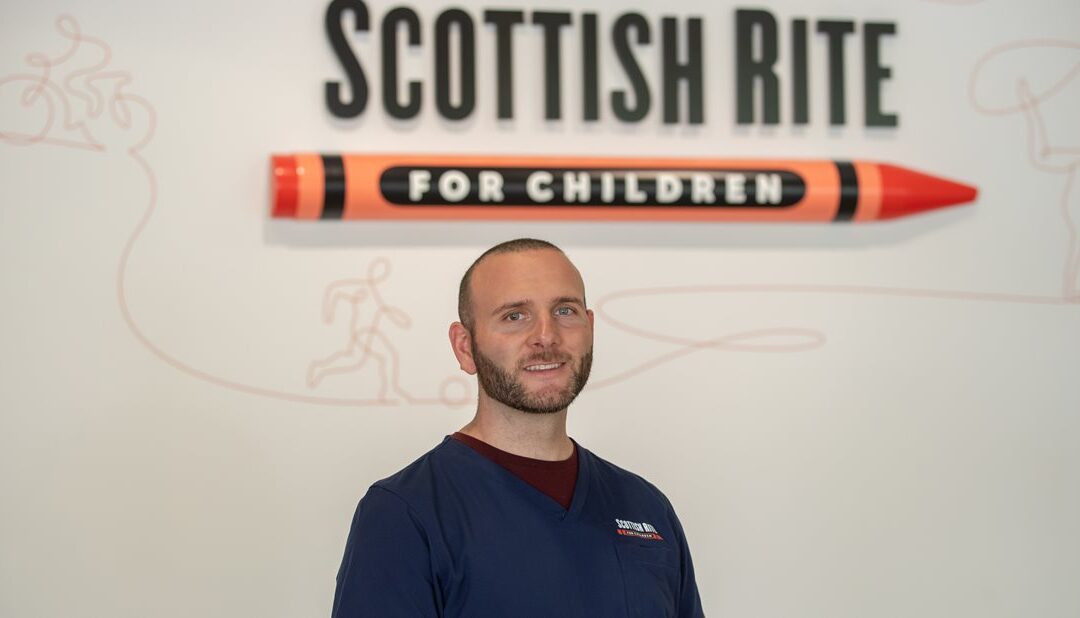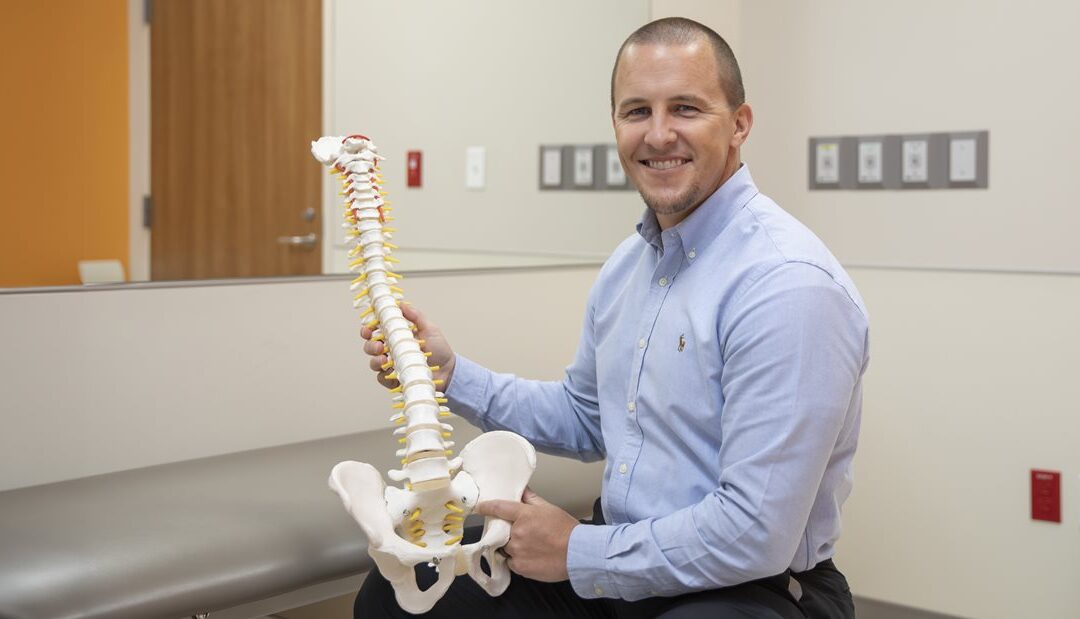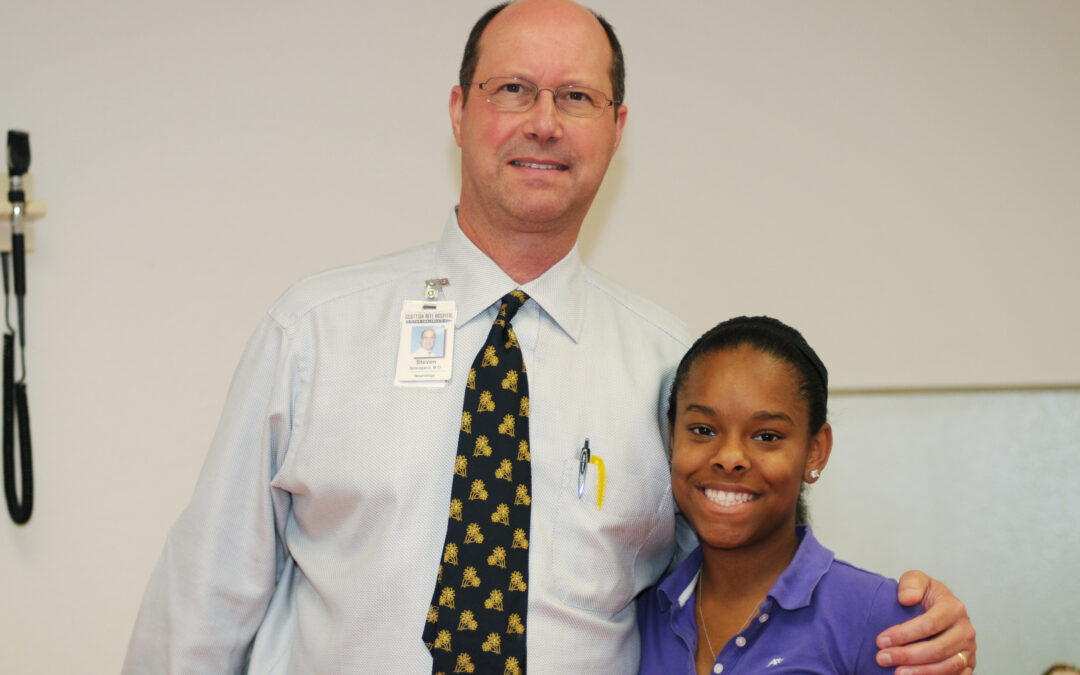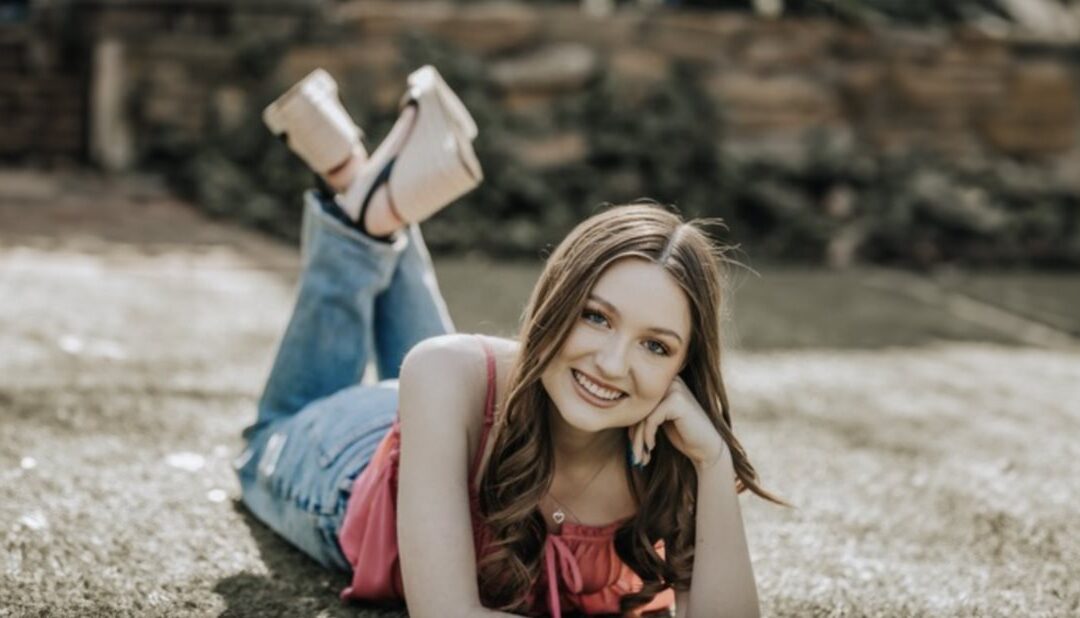
A Parent’s and Patient’s Perspective on Scoliosis – Allison’s Amazing Journey
Lisa, mom of Allison, shares what it was like for her daughter Allison to be treated at Scottish for Children for scoliosis:
What brought you guys to Scottish Rite?
Allison was 8 years old when we went to her pediatrician for back pain she had recently been experiencing. At her appointment, the doctor noticed a curve in her spine and diagnosed her with scoliosis. After confirming her condition with an X-ray, Allison was referred to Scottish Rite for Children by her doctor. We were also told by others to go to Scottish Rite for the best care possible. From the moment we walked in the front doors, the sense of peace we felt was so overwhelming. We knew our decision to come to Scottish Rite was the right one!
What was your experience like with Dr. Ramo and the Scottish Rite staff?
The compassion Dr. Ramo, his nurse Marivel and his entire team showed us is something we will never forget. As parents who were very concerned about this diagnosis, Dr. Ramo explained everything thoroughly. He answered all our questions and addressed our concerns, which made us feel very confident in the treatment and surgery plan for Allison. With her very young age and significant curve, her treatment plan was to insert MAGEC® growing rods which would be lengthened every six months to allow for more growth before her spinal fusion. With Dr. Ramo’s expertise and knowledge, we knew we would get through this.
Do you have any advice for parents whose children have recently been diagnosed with scoliosis?
Remember that as worried as you might be for your child, your child is scared and worried, too. Encourage them to write down or ask questions they may have about their treatment plan and surgery. Dr. Ramo would always ask Allison if she had any questions for him. He would answer every question looking directly at her, so she understood. Him taking the extra time to do all of this made her feel better and settled her fears.
What’s it like to see Allison where she is today?
Seeing Allison where she is today fills us with such gratitude. The doctors at Scottish Rite are unmatched in their skills. God has given them their knowledge and expertise in their chosen field and helps them perform miracles every day. We feel blessed to have been a part of these miracles.

What do you want people to know about Allison’s accomplishments?
We are so proud of Allison’s accomplishments. She has been on the honor roll since she first started school. She recently graduated high school as a member of the National Honor Society, AP Ambassadors, and she was enrolled in Dual Credit and On Ramps classes. Because of her high academic achievement, she has qualified for automatic acceptance to the University of Texas at Austin and Texas A & M. She has also been accepted to SMU, UNT, Baylor and TCU. She recently made her decision to commit to TCU to further her academic career by majoring in marketing. She is excited to experience college life living in the dorm and meeting new friends.
We are also proud of her involvement with the Peer Support program at Scottish Rite. She has talked on the phone and on FaceTime with other patients – walking them through the process of scoliosis surgery. She has said, “If I can help someone else by answering their questions in hopes of making them feel better and easing their fears, than every minute I’m on the phone with them is worth it. Hopefully, they can see and hear that I did it, and they can too!”
Is there anything you want to say to Dr. Ramo and his team?
We are eternally grateful to Dr. Ramo and his team. They are like family to us. We recently returned to Scottish Rite to see Dr. Ramo for her final follow up. Walking through those doors again felt like coming home! Marivel changed her schedule to be there when we came just so she could see Allison and catch up on her progress! What a great visit we all had! Scottish Rite will always hold a special place in our hearts!
Allison, a former patient treated by Brandon A. Ramo, M.D., for scoliosis, shares her experience at Scottish Rite and what other kids should know:
Tell us about your journey with scoliosis and Scottish Rite for Children.
My journey with scoliosis and Scottish Rite for Children started when I was in second grade after I began to experience severe back pain. Even though I was very young, I knew that something was wrong. My parents took me to Scottish Rite, and I had growing rods put in to straighten my spine. About every six months, I would have my growing rods lengthened as my torso grew. When I was in fourth grade, I had my final spinal fusion. In the beginning, I was very scared about my situation since there were so many uncertainties. Scottish Rite for Children helped me tremendously through everything by having phenomenal staff who supported me through my journey. I felt comfortable throughout the entire process, which made my journey a lot easier and helped me through my fears.
What would you tell other kids about Scottish Rite?
I would tell other kids that Scottish Rite is the best hospital and has some of the best people you will ever meet. No matter what you are going through, they will be there to support you in any way possible and help you have an easier experience. There are fun things to do that give you things to look forward to when you go. You will meet staff who are the most compassionate and caring people you have ever met. Overall, Scottish Rite is an amazing place with outstanding people and resources.
What is your advice to other kids who have been diagnosed with scoliosis?
I would advise other kids who have been diagnosed with scoliosis to not be afraid. I was very afraid when I was first diagnosed, but my fears were eased when I realized what amazing people would be taking care of me and helping me through my situation. It may seem scary at first, but trust me, it will become a lot less scary. Remember that you have people supporting you and wishing the best for you!
What is your favorite thing about or favorite memory of Scottish Rite?
One of my favorite things about Scottish Rite was the dogs that visit you every week in the Inpatient Unit. I can remember how excited I was to pet the dogs, especially since I never had a dog. I was amazed that the dogs were so intelligent. Many of them knew all kinds of tricks, and one of them could even tell you it’s age. This was a memorable experience for me since I was really scared of having surgery, and having the dogs visit me helped me calm down and feel better about the situation.
What are your plans after high school graduation?
After high school graduation, I am going to be attending college at TCU and majoring in marketing. I am really excited for my new home as a frog, and I am ready to get the education I need to make a difference with my future career. I am also looking forward to living on campus and making new friends. I am thrilled to be able to further my academic career at college.
Some patients with scoliosis are worried surgery will cause them back pain when they get older. Can you share a little about your experience?
In my experience, my back pain became significantly better after I had surgery. Before I had surgery, I would get random episodes of extreme back pain. As I have gotten older and since I have had surgery, I have little to no back pain. The surgery for me was life changing in terms of pain. I can sit and stand for long periods of time, which I wasn’t able to do before. Now, I don’t even think about my back anymore in my daily life since it doesn’t really hurt anymore.
Is there anything you would want to say to Dr. Ramo and his team?
I would want to tell Dr. Ramo, Marivel and his entire team thank you for everything you have done for me. They did an exceptional job treating me and helping me through my scoliosis journey. There are not enough words to describe how thankful I am for the team and how they supported me. They were always there for me and answered all my questions regarding my scoliosis. I always felt at ease at Scottish Rite because of my confidence in Dr. Ramo and his team and their outstanding skills and capabilities.
Learn more about our expert scoliosis care and our Center for Excellence in Spine.
